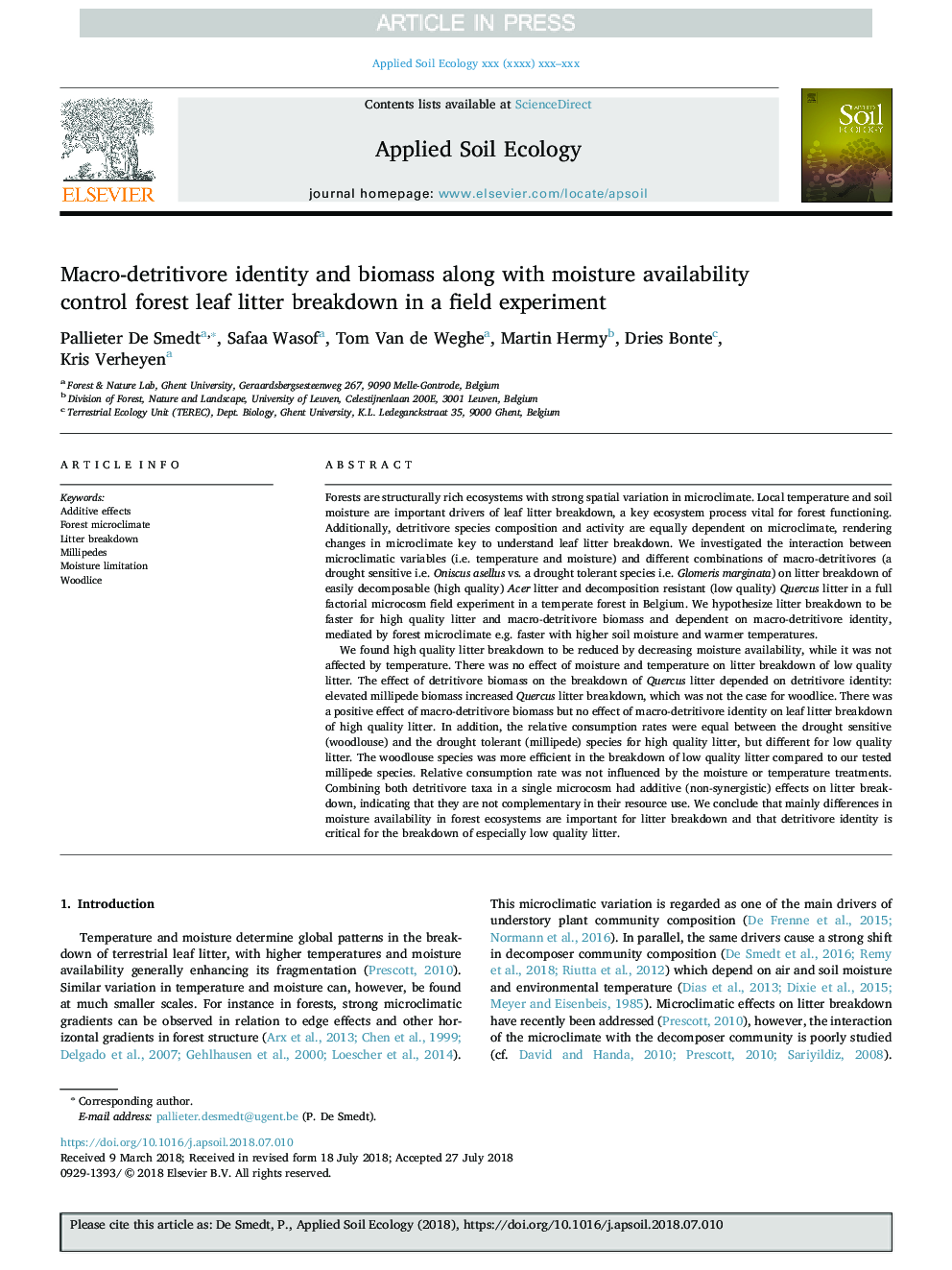| Article ID | Journal | Published Year | Pages | File Type |
|---|---|---|---|---|
| 10223323 | Applied Soil Ecology | 2018 | 8 Pages |
Abstract
We found high quality litter breakdown to be reduced by decreasing moisture availability, while it was not affected by temperature. There was no effect of moisture and temperature on litter breakdown of low quality litter. The effect of detritivore biomass on the breakdown of Quercus litter depended on detritivore identity: elevated millipede biomass increased Quercus litter breakdown, which was not the case for woodlice. There was a positive effect of macro-detritivore biomass but no effect of macro-detritivore identity on leaf litter breakdown of high quality litter. In addition, the relative consumption rates were equal between the drought sensitive (woodlouse) and the drought tolerant (millipede) species for high quality litter, but different for low quality litter. The woodlouse species was more efficient in the breakdown of low quality litter compared to our tested millipede species. Relative consumption rate was not influenced by the moisture or temperature treatments. Combining both detritivore taxa in a single microcosm had additive (non-synergistic) effects on litter breakdown, indicating that they are not complementary in their resource use. We conclude that mainly differences in moisture availability in forest ecosystems are important for litter breakdown and that detritivore identity is critical for the breakdown of especially low quality litter.
Related Topics
Life Sciences
Agricultural and Biological Sciences
Ecology, Evolution, Behavior and Systematics
Authors
Pallieter De Smedt, Safaa Wasof, Tom Van de Weghe, Martin Hermy, Dries Bonte, Kris Verheyen,
